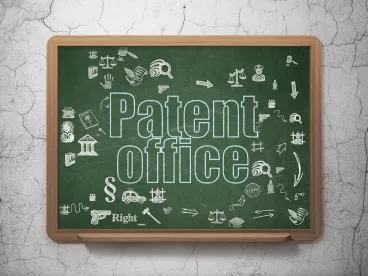Inter Partes Review (IPR) proceedings before the Patent Trial and Appeal Board (PTAB) are meant to be a less time-consuming and less costly dispute resolution mechanism than litigation. Nevertheless, Congress also anticipated that parties might try to use IPR proceedings for purposes of delay tactics and repeated harassment. To prevent this, 35 U.S.C. § 315(b) provides, in pertinent part, that a party must file a petition to institute an IPR within one year of being served with a complaint alleging patent infringement:
An inter partes review may not be instituted if the petition requesting the proceeding is filed more than 1 year after the date on which the petitioner, real party in interest, or privy of the petitioner is served with a complaint alleging infringement of the patent. (35 U.S.C. § 315(b).)
The statute thus balances a litigation defendant’s potential preference for resolving the dispute through less costly IPR proceedings against that same defendant’s potential abuse of an IPR proceeding as a tool for delay and harassment. The result is that if a litigation defendant fails to file an IPR within the one-year window of 35 U.S.C. § 315(b), the defendant will be barred from filing an IPR petition.
Application of the One-Year Bar
The one-year bar of 35 U.S.C. § 315(b) (the One-Year Bar) seems relatively straightforward, but the realities of litigation procedure have required the PTAB to interpret the statute to determine whether a “complaint” was “served” more than a year before the petition was filed. For the most part, the One-Year Bar has been strictly applied. Nevertheless, the PTAB has recognized some important exceptions. In particular, the PTAB has consistently stated that the One-Year Bar does not apply if a complaint alleging patent infringement is resolved in such a way that the parties are left as if the infringement action had never been filed.[1] The following examples demonstrate the way the PTAB has applied this general principle:
One-Year Bar Applies
-
Amending a Complaint Does Not Reset. The PTAB has held that an amended complaint will not reset the one-year clock. In this context, the original complaint has not gone away, it has simply been amended. Nevertheless, the PTAB has recognized that where a petitioner presents “persuasive evidence” that “an original complaint that has been amended should be considered as if it had never been filed,” the One-Year Bar will not apply.[2]
-
Dismissal in the Context of Case Consolidation Does Not Reset. Similarly, the PTAB has ruled that if dismissal is a mere housekeeping matter as part of case consolidation, it will not automatically reset the One-Year Bar. The PTAB’s reasoning is that the infringement allegations in the dismissed complaints from the initial suits remained pending throughout the entire dispute.[3]
-
Claim Amended after Re-examination Does Not Reset. The PTAB has also held that the One-Year Bar applies even when an IPR petition challenges claims that were amended or added by re-examination after service of the original complaint.[4]
One-Year Clock is Reset
-
Voluntary Dismissal without Prejudice Resets the One-Year Clock. The PTAB has held on multiple occasions that voluntary dismissal without prejudice leaves the parties as if the action had never been brought, so the One-Year Bar does not apply.[5]
-
Dismissal for Lack of Subject Matter Jurisdiction Resets the One-Year Clock. Likewise, the PTAB has held that dismissal for lack of subject matter jurisdiction will reset the One-Year Bar, because the court never had authority to hear such a case.[6]
One-Year Clock Is Not Triggered
-
Arbitration Does Not Start the One-Year Clock. The PTAB has determined that allegations of infringement in arbitration do not trigger the One-Year Bar because the statute requires a complaint in a civil action for patent infringement.[7]
-
Administrative Agency Proceedings Do Not Start the One-Year Clock. The PTAB has also determined that an administrative proceeding before the U.S. International Trade Commission (“ITC”) does not trigger the One-Year Bar because the statute requires a complaint in a civil action for patent infringement.[8]
Finality of PTAB Decisions under 35 U.S.C. § 315(b)
It is worth noting that the PTAB’s decision whether or not to institute an IPR is final and non-appealable, and this holds true for the PTAB’s rulings on the One-Year Bar. The Federal Circuit’s rejection of efforts to appeal is based on two grounds: (1) the decision whether or not to institute an IPR is not a “final written decision,” which is required for appeal, and (2) the appeal of a decision regarding institution of an IPR is expressly barred by 35 U.S.C. § 315(d). Thus far, the Federal Circuit has consistently rejected attempts to circumvent these rules, including the use of interlocutory review through mandamus and the Administrative Procedure Act (APA). Furthermore, the Federal Circuit has now held that 35 U.S.C. § 315(d) prohibits review of PTAB decisions regarding the One-Year Bar, “even if such assessment is reconsidered during the merits phase of the proceedings and restated as part of the Board’s final written decision.”[9]
Conclusion
Patent litigation defendants should carefully consider whether to petition for IPR soon after being served with a complaint. Furthermore, the defendant should be aware that even dismissal of a case might not necessarily reset the One-Year Bar. The important consideration is whether the case is resolved in such a way that the parties are left as if the infringement action had never been filed. Defendants can potentially use an IPR to reduce their litigation costs, but the One-Year Bar means that defendants must make strategic decisions early in litigation about filing an IPR petition.
[1] See, e.g., Shaw Indus. Group, Inc. v. Automated Creel Sys., Inc., Case IPR2013-00584 (PTAB Dec. 31, 2013) (Paper 16 at 13) (“a dismissal without prejudice leaves the parties as though the action had never been brought”); Samsung Elecs. Am., Inc. v. LED Tech Dev., LLC, Case IPR2014-00590 (PTAB Sept. 3, 2014) (Paper 23 at 6) (“In the PTAB decisions cited by Patent Owner, the Board adopted the Federal Circuit’s determination that the dismissal of an action without prejudice leaves the parties as though the action had never been brought. We agree.”)
[2] Loral Space & Commc’ns, Inc. v. Viasat, Inc., Case IPR2014-00236 (PTAB April 21, 2014) (Paper 7 at 7).
[3] Apple Inc. v. Rensselaer Polytechnic Institute and Dynamic Advances, LLC, Case IPR2014-00319 (PTAB June 12, 2014) (Paper 12) (the court consolidated two cases and simply dismissed the first), Histologics, LLC v. CDX Diagnostics, Inc. and Shared Medical Resources, LLC, Case IPR2014-00779 (PTAB Sept. 12, 2014) (Paper 6) (the court consolidated two actions and dismissed the earlier filed case), and eBay, Inc. v. Advanced Auctions LLC, Case IPR2014-00806 (PTAB Sept. 25, 2014) (Paper 14) (the infringement allegations from a first action were effectively carried over into a second action without interruption).
[4] Biodelivery Sciences Int’l, Inc. v. Monosol Rx, LLC, Case IPR2013-00315 (PTAB Nov. 13, 2013) (Paper 31 at 3).
[5] See, e.g., Ariosa Diagnostics, v. Isis Innovation Limited, Case IPR2012-00022 (PTAB Sept. 2, 2014) (Paper 166 at 16-18); and Macauto U.S.A. v. BOS GMBH & KG, Case IPR2012-00004 (PTAB Jan. 24, 2013) (Paper 18 at 15).
[6] Invue Security Prods., Inc. v. Merchandising Techs., Inc., Case IPR2013-00122 (PTAB June 27, 2013) (Paper 17 at 9-10).
[7] Amkor Technology, Inc., v. Tessera, Inc., Case IPR2013-00242 (PTAB Jan. 31, 2014) (Paper 98 at 6).
[8] Brinkmann Corp., v. A&J Manufacturing, LLC, IPR2015-00056 (PTAB March 23, 2015) (Paper 10 at 7).
[9] Achates Reference Publishing, Inc., v. Apple Inc., Case No. 2014-1788, 2015 U.S. App. LEXIS 17183 (Fed. Cir. Sept. 30, 2015).









 />i
/>i

